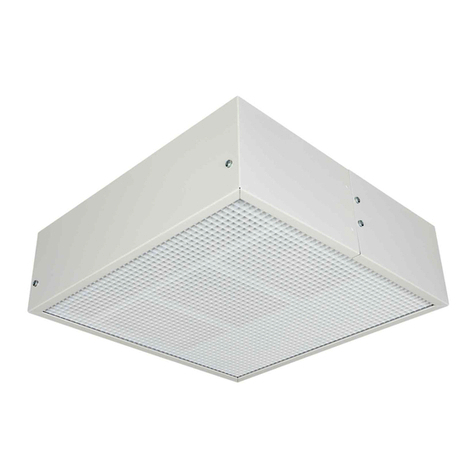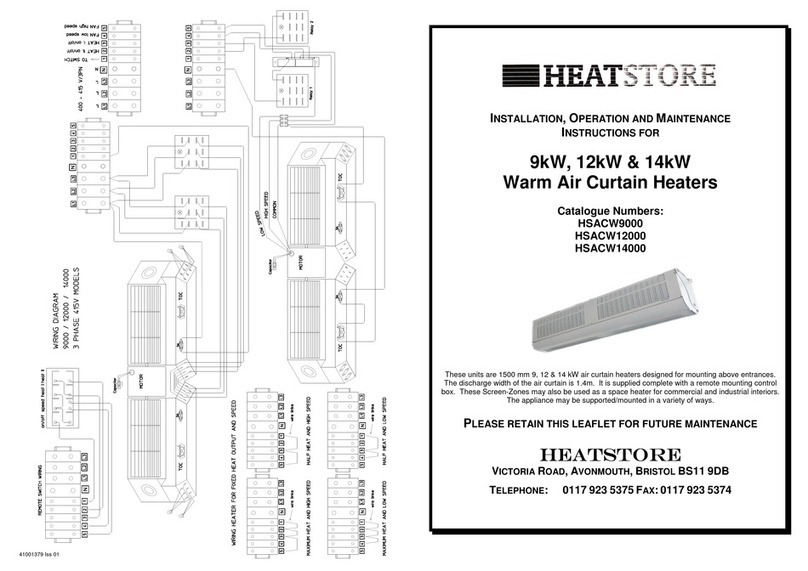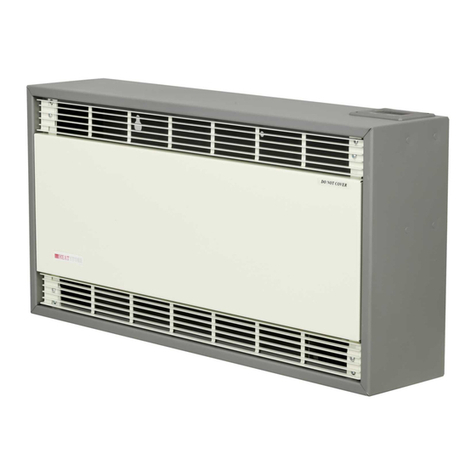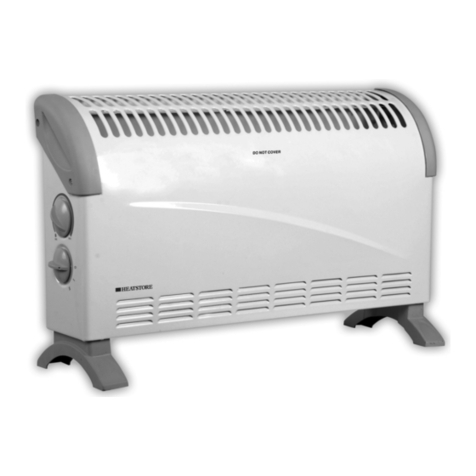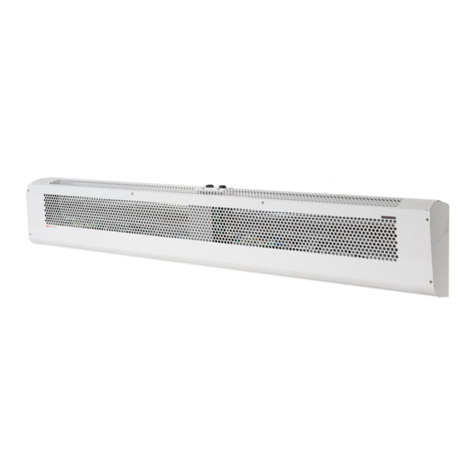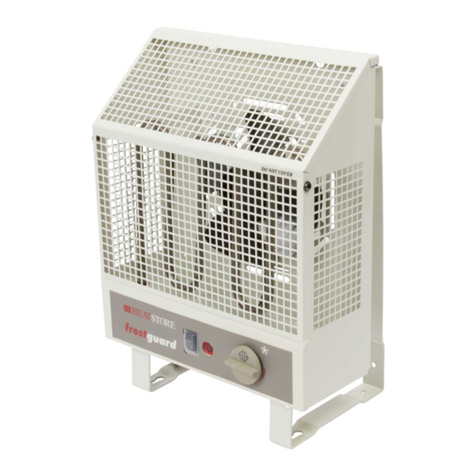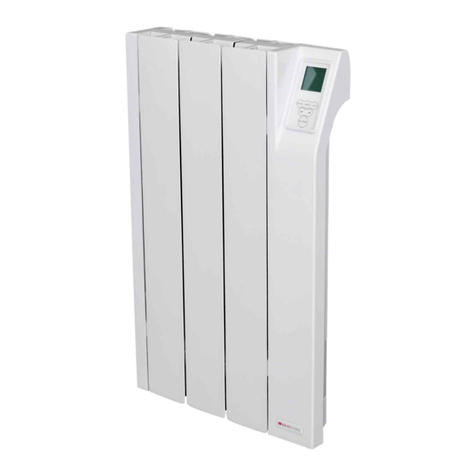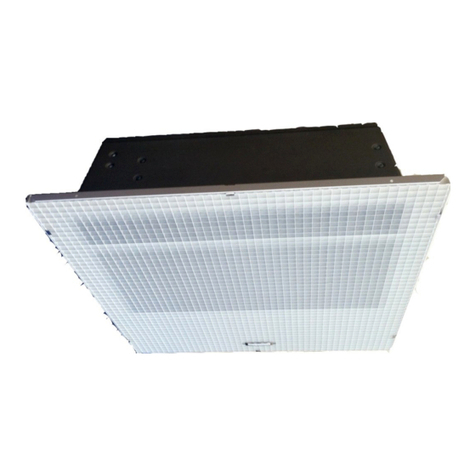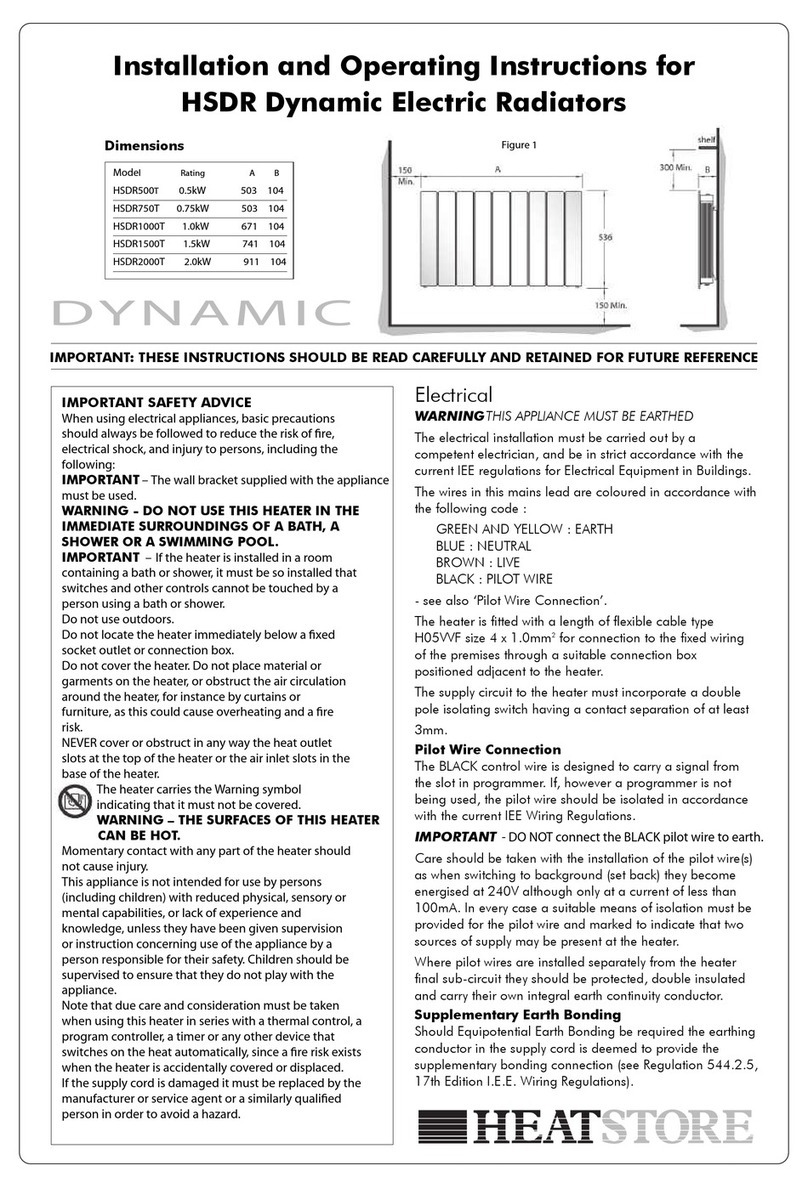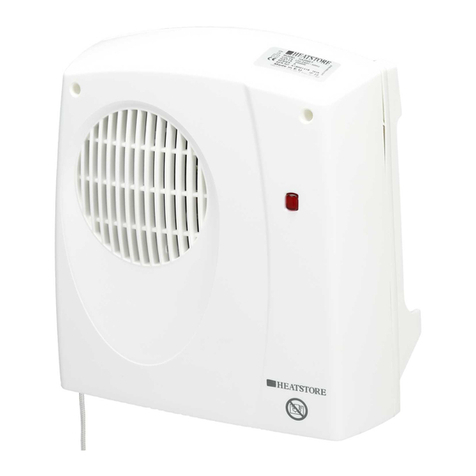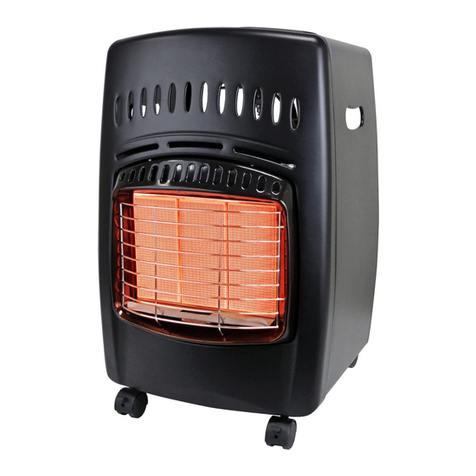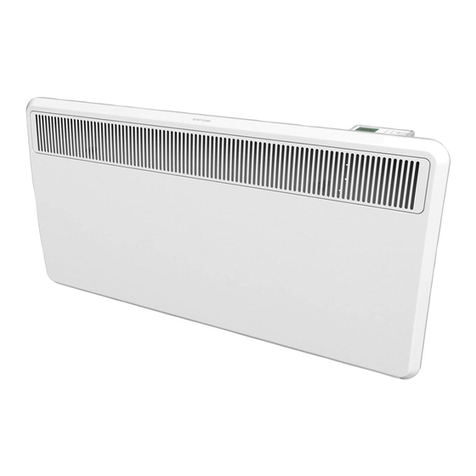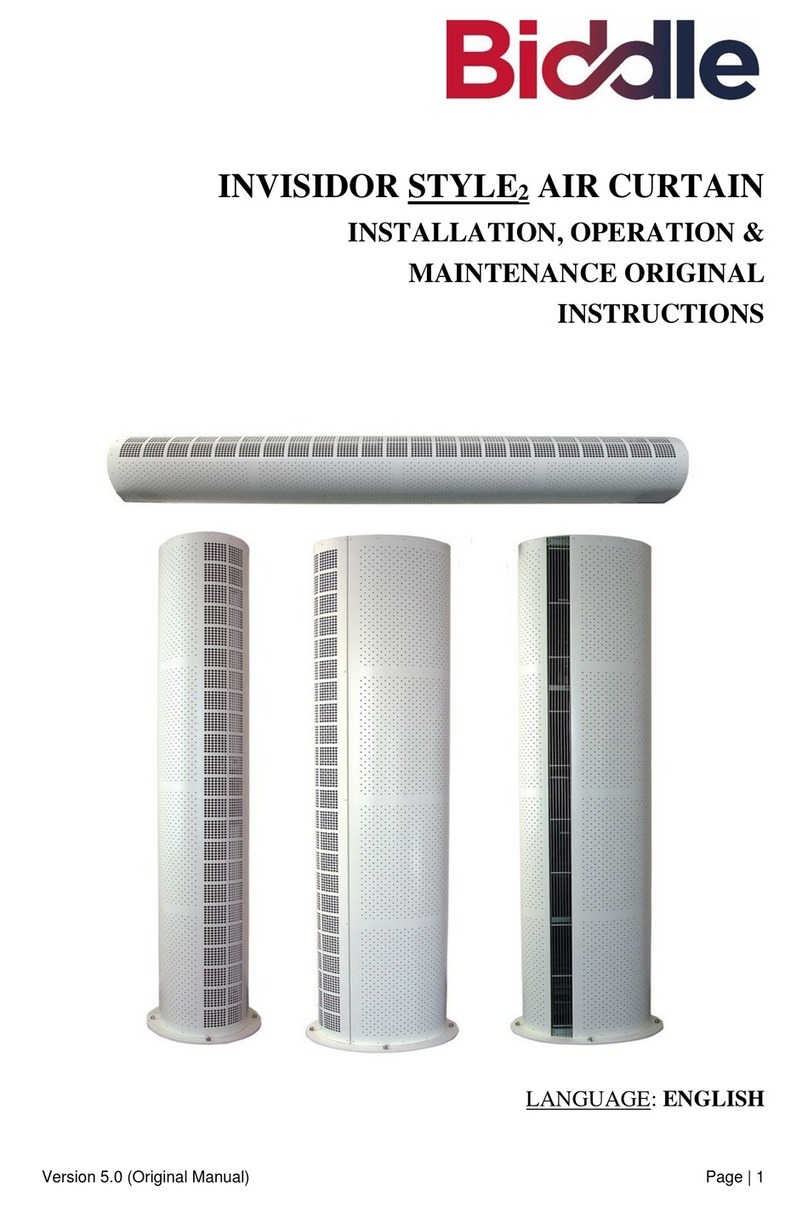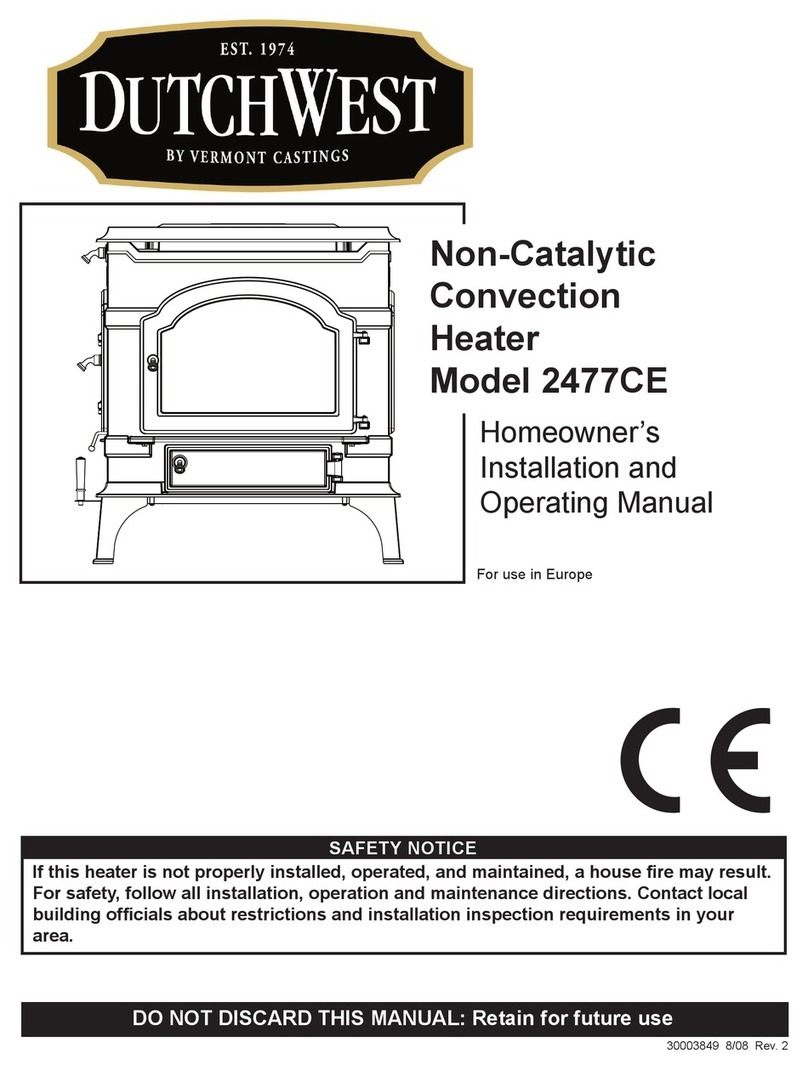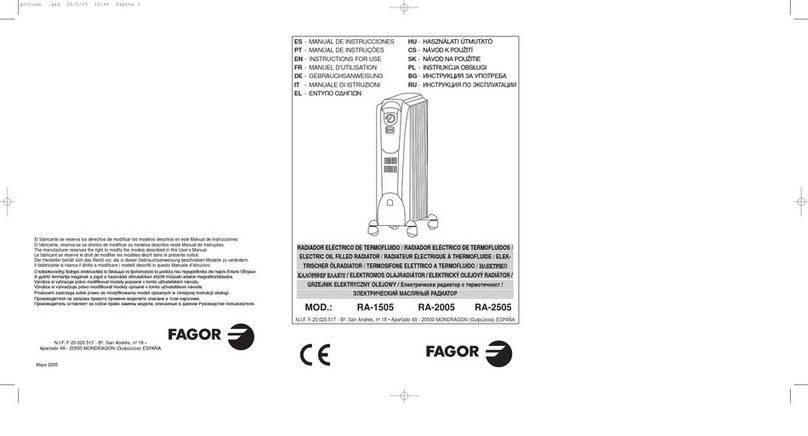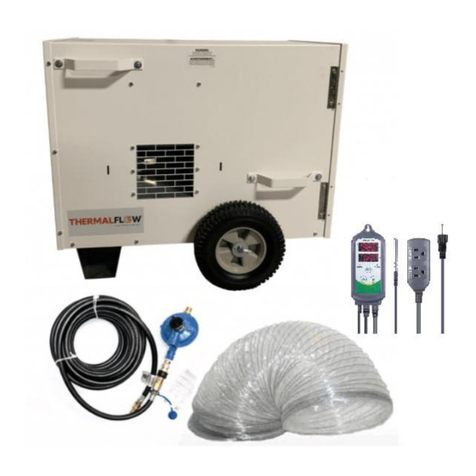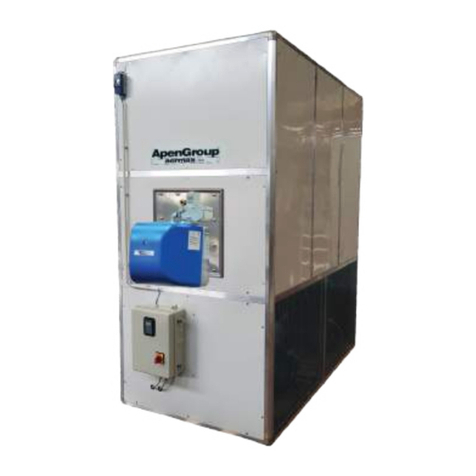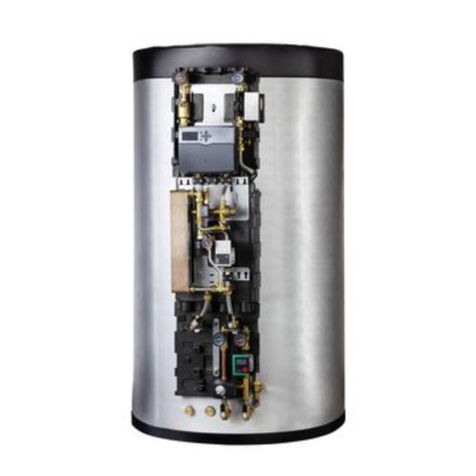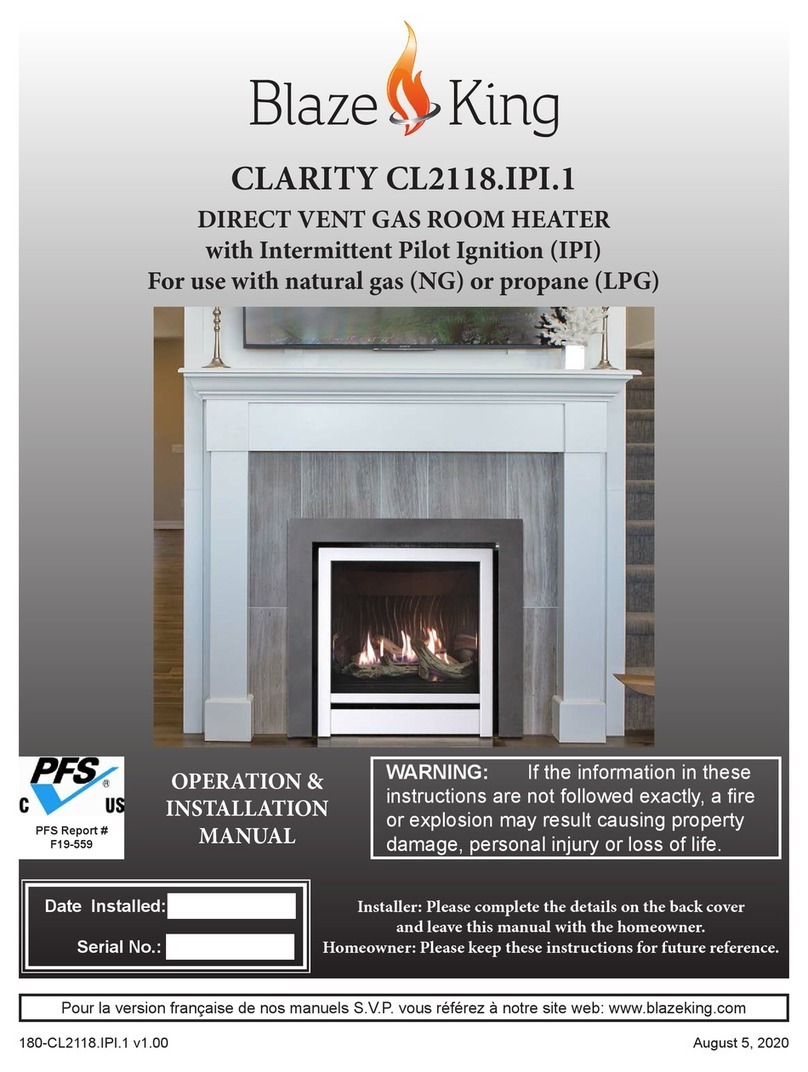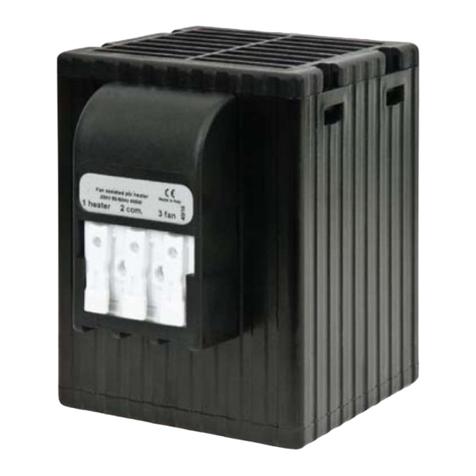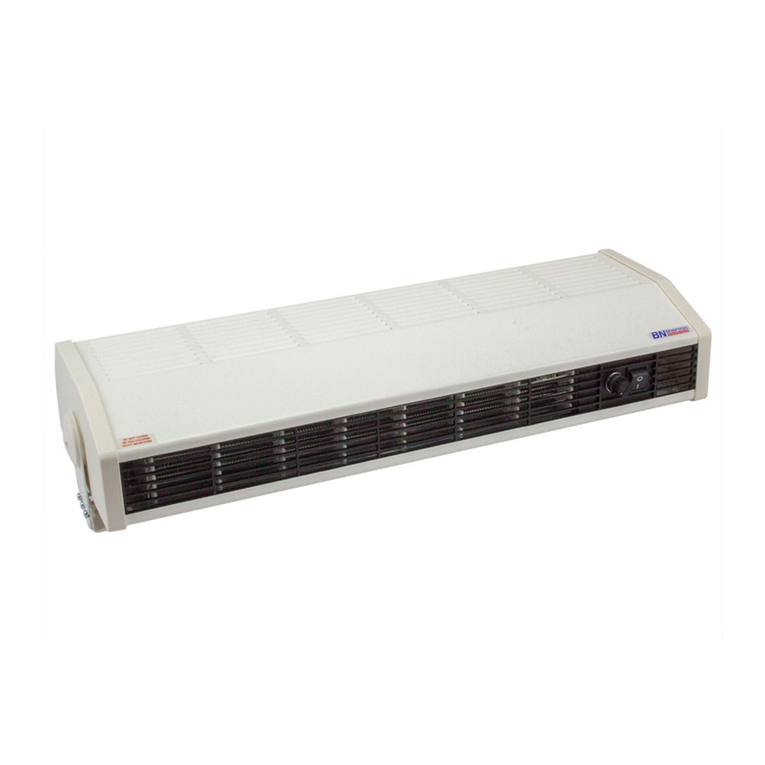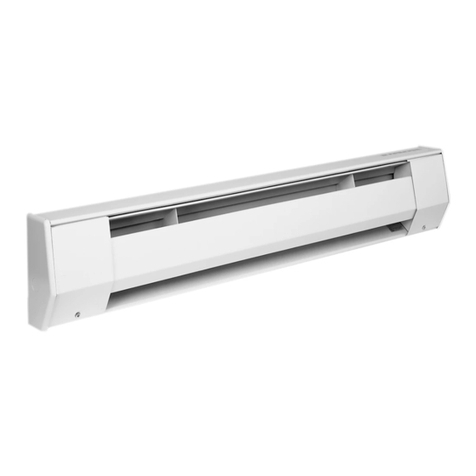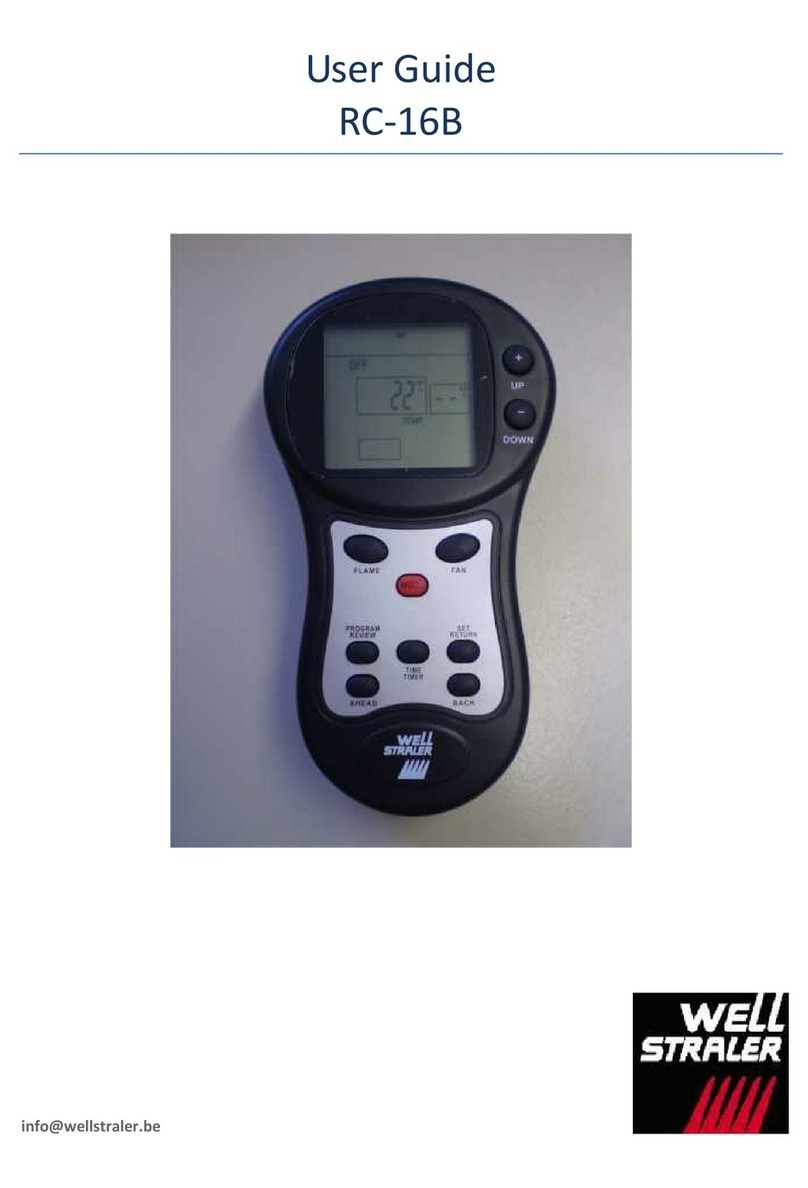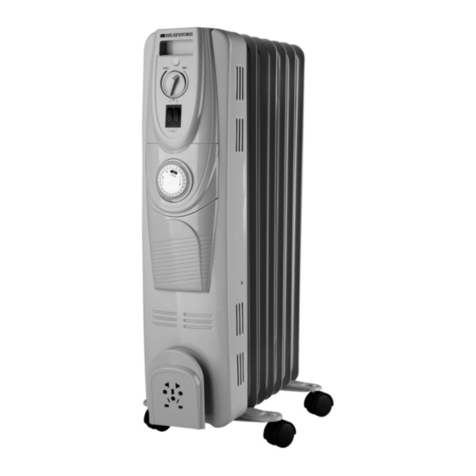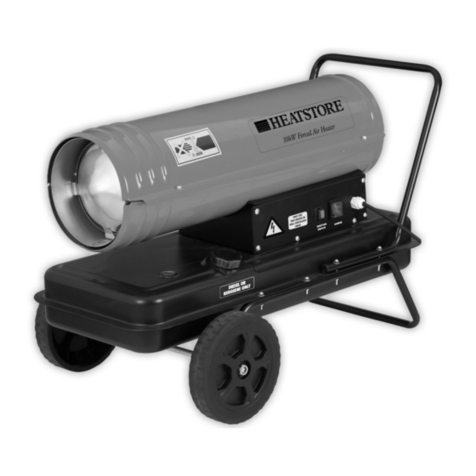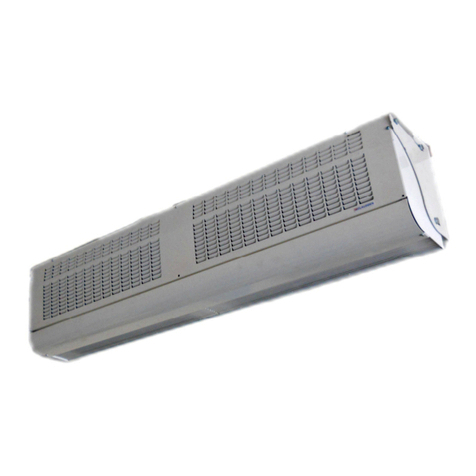
36000353 Iss 03
Figure 2 – Wall Mounting of Ceramic Heaters
NOTE: IT IS NOT RECOMMENDED TO SWIVEL THE BODY
MORE THATN 800FROM THE VERTICAL
Figure 3 – Minimum Clearances to Adjacent Wall and Ceilings
5. ASSEMBLY
Unpack the heater, remove all outer packaging. Although the
appliance’s construction is robust, care should be taken when
assembling the yoke and when securing onto the haning bracket the
yoke/heater assembly.
For all units, assemble the yoke onto the heater body, tightening the
clamp bolts finger tight.
Secure the hanging bracket to the wall with suitable fixings. Ensure
the position of this bracket will allow suitable clearances between the
heater, when fitted, and adjacent walls, ceilings or objects. See Fig 3.
Mount the yoke/heater assembly to the hanging bracket using the bolt,
washer and nut provided.
Finally adjust the direction of the heater to irradiate the desired area
and tighten up all clamping nuts and bolts.
6. ELECTRICAL CONNECTIONS
WARNING: Ensure that the electrical supply is isolated and made
safe before making any electrical connections.
WARNING: The Ceramic heater must be connected to a known
good earth. The terminal block earth terminal is clearly marked with
the standard earth symbol.
WARNING: The 3 and 4.5 kW appliances are supplied with a
1m length of silicone SIHF high temperature cable. If this cable
is replaced, then cable of the same specification MUST be used.
WARNING: When the unit is mounted ensure that the cable
entry point is in the lowest position; this will assist in keeping the
terminals and cable cool.
The heaters should be connected to a 240 Volt single phase supply.
Fig 4 – Circuit Diagrams of Ceramic Heaters
Access to the mains supply terminal block can be obtained by
removing the entry plate at the rear of the heater, the plate being
secured by two screws. The terminal block is fitted to this plate.
The plate is connected to the heater body via an earthing cable.
Ensure that the cables are tightly connected in the terminal block;
ensure that the cables are secure in the cable gland and that the
cables are tight against the entry plate. Ensure that the cables do
not contact the rear of the reflector.
The installation should comply with the requirements of the IEE
wiring regulations and the heaters should be connected to a suitable
isolating switch.
7 CONTROL
In control systems, heaters may be switched on and off, using
suitable contractors, linked to the time switches or thermostats.
Temperature control using either air thermostats or black bulb
thermometers is possible, but the characteristics of radiant heating
make it difficult to achieve comfort control without very careful
choice of the thermostat and its position. Details of suitable circuits
and advice on the correct siting may be obtained from Claudgen.
8. MAINTENANCE
WARNING: Before opening the heater to carry out any
maintenance, ensure that the mains supply is switched off and made
safe. Also ensure that the unit has cooled and is not too hot to
handle.
Because of the high heat output and the open nature of the
construction, there is a substantial convected airflow through the
unit. Any dust in the atmosphere will also be carried up through the
heater and, in due course, deposits of dust may build up within the
unit. It is essential that such deposits are removed at regular
intervals, otherwise they could become a fire hazard. To maintain
the efficiency of the unit, the reflector should be cleaned regularly.
Before cleaning ensure the appliance is switched OFF and has cooled
down. Cleaning the reflector should require no more than a damp
cloth. Avoid using any abrasive cleaners. It should not be necessary
to remove the ceramic emitters during cleaning; carefully wipe
around them.
9. SPARES
HSCEH7115N
HSC1500CE – Spare Emitter (1.5 kW) suits: HSCEH7230N
HSCEH7345N
In the interest of progress the Company reserves the right to vary
specification from time to time without notice. The material listed is
offered subject to the Company’s General Conditions of Sale, a copy
of which may be obtained on request
